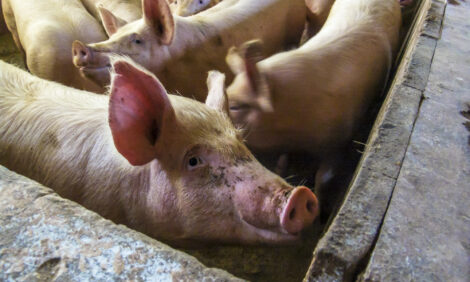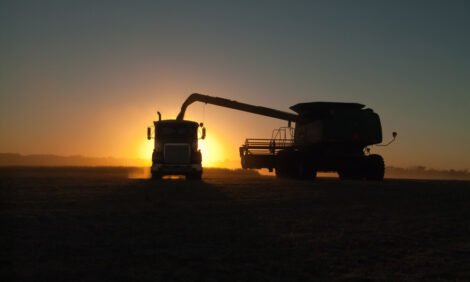|
Need a Product or service?
|
|
National
Pig
Association
THE VOICE OF THE UK PIG INDUSTRY
NPA is active on members' behalf in Brussels & Whitehall, and with processors, supermarkets & caterers – fighting for the growth and pros-perity of the UK pig industry. |
And now, with AutoFom, British producers have the wherewithal to discover the winning formula that will create that extra percentage point (or more.)
"I've always had this suspicion that the very leanest pig isn't necessarily the pig with the greatest lean meat content," said Colin Wooldridge, of marketing company Meadow Quality. "But the P2 probe is such a crude measure there has been no way to prove or disprove it."
Well now he's got the chance to find out if his theory is correct - but it will take him a year of interviews and number crunching, followed by two years of promoting the results across the industry.
From around November, detailed figures from AutoFom will become available to producers and marketing groups supplying George Adams at Spalding in Lincolnshire.
It should then be possible to analyse each producer's figures in conjunction with his or her genetic and nutritional management and to identify a winning formula for creating maximum lean meat in the four primals.
"If we analyse the figures from twenty producers it won't tell us very much," said Colin Wooldridge, "but if we analyse a hundred or more we will start to get some serious statistics."
For this reasons he is hoping to involve all the pig market groups. Two have already given him the thumbs up and others are expected to follow over the next few weeks.
The work will be financed by a 3150,000 BPEX supply chain grant and the results will be available to everyone, so the whole industry should benefit.
Those who take part need have no fears about confidentiality, he stressed. Producers who contribute will be identified only by reference number.
Year one of the project will involve collecting and analysing data to produce a lean meat blueprint and this will be followed by two years of communicating the results to producers and persuading them to make the necessary changes to their own management.
"There may be a temptation for some to say it doesn't affect them because their processor doesn't use AutoFom, but we all know that others will be installing AutoFom, and probably sooner rather than later," he said.
The final formula could have as many as 40 action points some of which may involve changing genetics. "If changing genetics were shown to be necessary you'd be talking three years to see improvements but if there were other things you could do in the meantime, such as tweaking a ration, you could see improvements in just a matter of weeks."
It's an important issue because the introduction of AutoFom to Britain means that for the first time producers will be paid for producing lean meat in the right places for the processors' outlets.
In the survey, producers will be asked about their male and female line genetics, their AI supplier and percentage usage, and their disease status.
They will be asked their average weaning weight and age, whether pigs are vaccinated before weaning, their daily liveweight gain from weaning to 30 kilos, and from 30 kilos to slaughter, their average food conversion ratio from weaning and, of course, their killing out percentage.
Importantly the survey devotes considerable attention to feed. Producers will be asked about their compound, home-mix and co-product feeding regimes, when they withdraw feed before slaughter, and whether creep is fed, and if so from when to when.
For each diet Colin Wooldridge will want to know dietary energy density, and oil, protein and crude fibre content. He will also want to know if antibiotic growth promoters are included in the feed. And he will be looking at seasonal effects on primal yields.
"It would have been easy to keeping adding more questions as I thought of them," he said, "but I think we have ended up with a survey that covers all the main points without being untenably long."
He thought hard about including a section on housing but in the end decided not to, on the basis that it is not so much the housing itself that influences performance, but the management of it.
When the results have been compiled and properly weighted it should be possible to produce a blueprint that shows all producers how they can manage their pigs to achieve optimum lean meat.
Clearly this should bring considerable advantages to George Adams and its supplying producers.
It is anybody's bet how long it will be before Grampian and Dalehead - sorry, Tulip - are in a position to reap similar rewards but few people would be surprised if there were more than one AutoFom processor in Britain by the time the Meadow Quality project is complete.
Source: National Pig Association - 13th July 2004

















